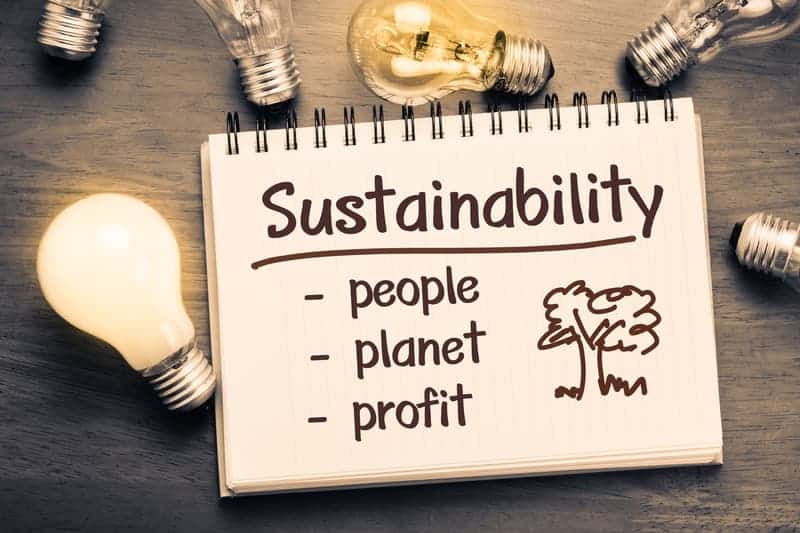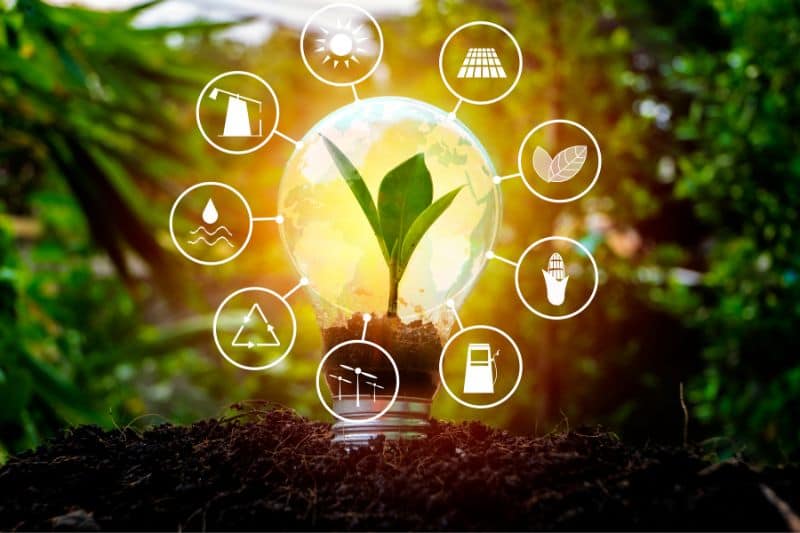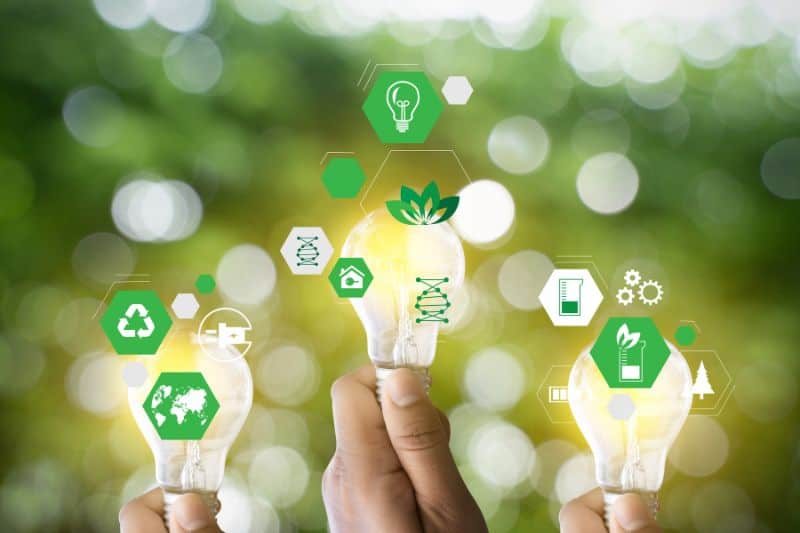I bet you’ve heard about the 3Rs of sustainability. But did you know that maintaining a sustainable environment requires much more than just reducing, reusing, and recycling?
That’s right!
As per recent reports, temperatures may increase by as much as 10 degrees Fahrenheit by the end of this century if greenhouse emissions go unabated.
This comes at the same time with another report by NOAA showing that the warmest years ever recorded have happened in the last decade (2014 – 2023), with 2023 being the hottest.
The gist? We’re in a climate crisis.
But there’s hope, and it starts with understanding the 8 R’s of sustainability!
In this article, we go beyond the superficial 3Rs to discover the 8Rs of sustainability that can genuinely make a difference in preserving the environment and promoting sustainability.
Read: 75 Inspiring Sustainability Quotes – Sayings About Saving The Planet
8 R’s of Sustainability
1. Rethink
Perhaps you were expecting us to start off our coverage with either of the three most popular R’s – Reduce, Reuse, or Recycle.
But not so fast!
Before we can recycle, reduce, or reuse anything, we must first rethink our entire lifestyle and consumption habits.
Our modern consumerist culture has contributed greatly to the environmental crisis we face today. We are constantly bombarded with advertisements and messages telling us what new products to buy and what trends to follow, all in the name of “progress” and “convenience”.
But do we really need all these things? Do they truly make our lives better, or do they just add more clutter to our homes and landfills?
These are some of the questions that you need to ask yourself! Only buy what you just must have to buy!
Rethinking our lifestyle means questioning the status quo and being mindful of our consumption habits. It means adopting a minimalist mindset, where we only buy what we truly need and avoid unnecessary purchases.
An average American home has over 300,000 items, and yet we often feel like we need more. By rethinking our lifestyle, we can break this cycle of overconsumption and make more sustainable choices.
2. Reuse
Now comes the second R – Reuse! Most of us are familiar with the concept of reusing items, but how many of us actually practice it?
The truth is, not everything needs to be single-use and thrown away after one use. Many household items can be reused multiple times before they need to be recycled or disposed of.
For example, water used for washing dishes or clothes can be reused for watering plants or cleaning floors.
In fact, you can even reuse your clothes before washing them! If you’ve only worn something for a few hours and it’s still clean, why not wear it again instead of throwing it in the laundry basket? How about using a reusable water bottle instead of buying plastic bottles every day?
That simple initiative will be a step closer to salvaging our planet, especially considering the massive amount of energy that goes into manufacturing bottled water and the fact that a single-use bottle can linger in the environment for centuries before breaking down into microplastics.
By reusing items, we can reduce our waste and save resources. Plus, it can also save us money in the long run!

3. Repair
Just noticed that your electric kettle won’t switch on anymore? Maybe you just noticed that your shoes developed some tears, and you’re thinking of throwing them away and getting new ones.
Well, before you opt for any of these options, think again!
The third R – Repair, is all about fixing and maintaining items instead of replacing them.
If you can look around, you’ll realize that most of the items we own can be repaired and used for much longer before they need to be replaced.
So, instead of throwing away that broken phone, why not try getting it fixed? Instead of replacing your torn shoes or clothes, see if you can get them repaired. Not only will this save you money, but it also reduces the amount of waste generated from constantly buying new items.
The good thing is that we have lots of tutorials on Youtube and other platforms to guide you in case you aren’t sure about how to go about it. Alternatively, you can opt for respective repair centers: service centers for electronics, shoe cobblers for shoes, tailors for clothes, and other repair areas depending on what you want repaired.
By repairing and maintaining our possessions, we can keep them in use for a longer period, reducing our impact on the environment.
4. Refuse
The fourth R – Refuse, is all about saying no to things that harm the environment and promote unsustainable practices.
For instance, refuse to buy products packaged in excessive plastic or single-use items like straws and cutlery. Say no to fast fashion and instead opt for sustainable and ethically-made clothing options.
Also, refuse to drive when you can do walking, cycling, car pooling, public transport, or any other more sustainable modes of transportation.
Of course, you also have to say no to buying what you really don’t need. How about leasing/ renting/borrowing instead?
For instance, why would you need to buy a lawnmower for your small backyard when you could easily borrow one from a neighbor or rent it out?
Why would you opt for a plastic bag that only serves for an average of 12 minutes and lingers in our environment for hundreds of years when you could bring your own reusable bag? These are some of the things you just have to refuse!
By refusing to support unsustainable practices, we can send a message to companies that we demand more environmentally-friendly alternatives. This will hopefully encourage them to make more sustainable choices in their production process.
5. Reduce
Our number 5 “R” is probably the most well-known and practiced R in sustainability.
Reducing means using less of Earth’s resources in our everyday lives. This includes reducing our energy consumption, water usage, and waste generation.
Simple actions like turning off lights when not in use, taking shorter showers, and avoiding single-use items can make a big difference in reducing our environmental impact.
It’s also a good idea to turn off your lights when not in use, unplug appliances when not in use, and switch to energy-efficient options whenever possible. These are just a few of the many energy-saving tips you can adopt to reduce your energy use.
Reducing our consumption also means being mindful of what we buy. Do you really need that new gadget, or can you make do with what you already have? By reducing our purchases, we reduce the demand for products and resources, ultimately leading to a more sustainable future for all.
6. Re-Purpose
The sixth R – Re-Purpose is all about finding new uses for old items. Most people confuse it with Re-use, but there is a slight difference between the two.
Re-using means using an item for its original purpose, while re-purposing means finding a completely new use for it.
For instance, you can repurpose old jars as storage containers or turn old newspapers into wrapping paper. In fact, old newspapers are excellent for cleaning windows.
You can also turn old jars into flower pots and old toothbrushes into essential cleaning tools for tight spots like tile grout and other tiny spaces.
If you can think creatively, you can come up with a plethora of ways how you can reuse the majority of your household items.
Sites like Pinterest are excellent sources of creative ideas on how you can repurpose your everyday household items.
Re-purposing not only reduces the amount of waste we generate but also allows for a more creative and fun approach to our daily lives. So next time you’re about to throw something away, think if there is a way to re-purpose it instead!

7. Rot
If you’re into gardening, then the seventh R, Rot, might be your favorite.
Rotting or composting is the process of breaking down organic waste into nutrient-rich soil that can be used for gardening.
By separating our food scraps and other organic waste from our regular trash, we can prevent it from ending up in landfills where it produces harmful greenhouse gases.
You can compost a plethora of kitchen waste, from fruit and vegetable peels to coffee grounds and eggshells. Composting not only reduces waste but also helps create a more sustainable cycle by returning nutrients back to the soil.
The good thing is that making use of this R isn’t really difficult, even if you’re a compost starter. You can either make a compost bin or pile in your backyard, or join a community composting program if available in your area.
And if doing it from your home, remember to know the dos and don’ts of composting so that your compost turns out to be healthy and nutrient-rich. That way, you can use it to nourish your own garden or even share it with others in your community.
Read: Why is Magnet Fishing Illegal?
8. Recycle
Of course, we can’t forget what has been frequently mentioned when talking about sustainable practices — recycling.
Recycling is the process of converting waste materials into new products to reduce the consumption of raw materials, save energy, and decrease pollution.
In most countries, there are specific bins for different types of recyclables like paper, plastic, glass, and metal. By adequately sorting our waste and sending it to be recycled, we can prevent it from ending up in landfills or polluting our environment.
Recycling also helps conserve natural resources and reduce the need for extracting new raw materials, which can harm the environment.
For instance, by using old aluminum cans to make new ones, an organization uses 95% less energy than when making the same product from virgin aluminum. That’s only a single scenario of the multiple benefits of recycling.
Of course, these benefits don’t come to the manufacturing sector. Recycling can help save energy in our homes in many ways.
And remember, recycling is not a solution to our environmental problems, but it’s an essential part. It should never replace reducing or reusing, and we should always prioritize these options over recycling whenever possible.
However, when you can’t reduce, reuse, or apply any of the other “Rs” over something, make sure to recycle it correctly.
But of course, remember not everything can be recycled. If you’re unsure whether an item is recyclable or not, check with your local recycling center or municipality for guidance. It’s always better to double-check and avoid contaminating the recycling process.






